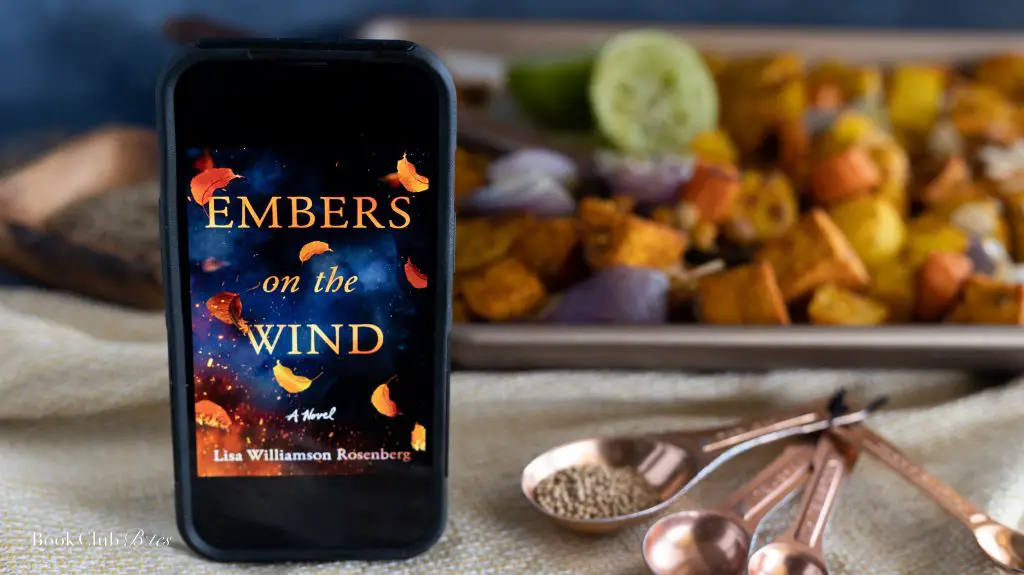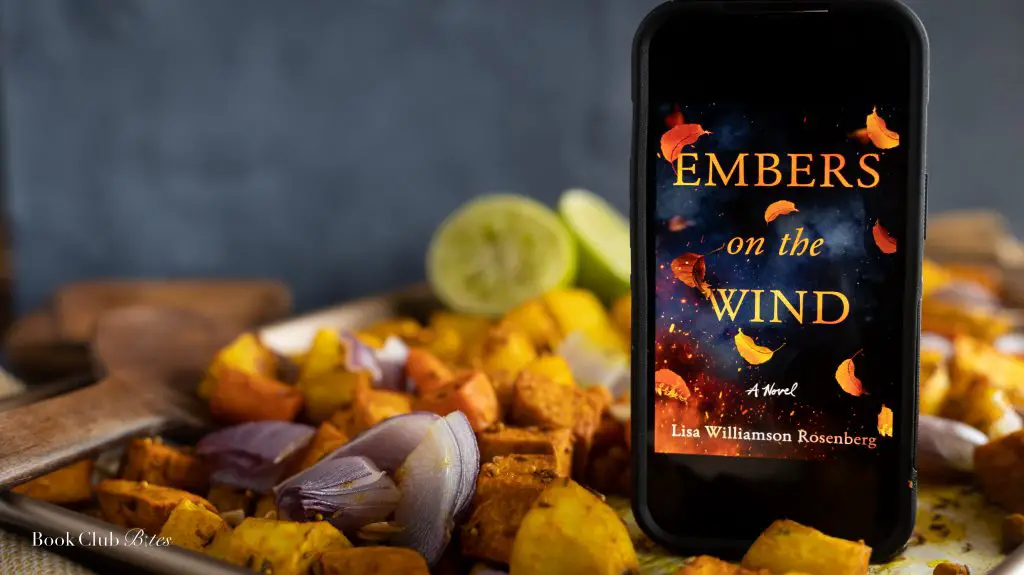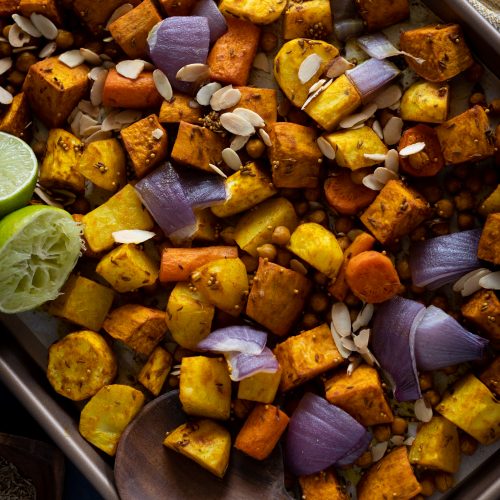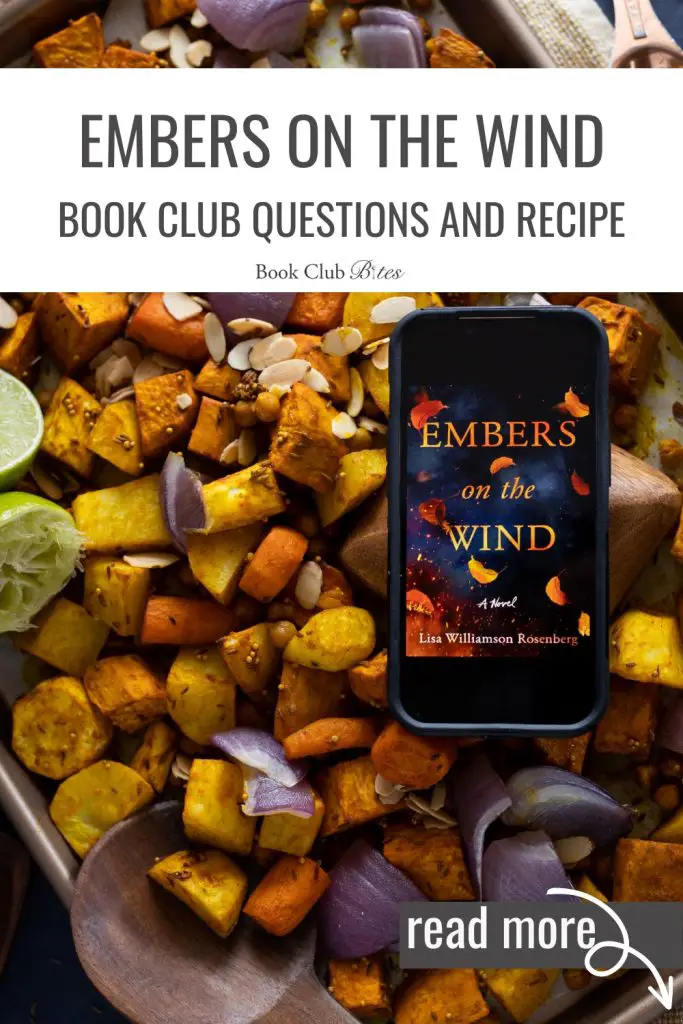*If you are new here, WELCOME! For Embers on the Wind, I provide your book club with a brief summary, food ideas and a recipe, and discussion questions in that order!

Embers on the Wind is Lisa Williamson Rosenberg’s latest work of fiction. Tackling the interwoven stories of many generations of black women, Rosenberg spins a tale of complex emotion, especially regarding heritage.
The book is told from many points of view, which may confuse some readers. However, if you are generally a fast reader, you shouldn’t have any issues following how the characters are connected.
The tone and style of the novel reminded me of Toni Morrison or Alice Walker. And Rosenberg echoed those authors in raising questions about heritage, race, identity and more. (A large portion of the novel takes place at a house once used by the Underground Railroad).
Embers on the Wind is a novel chosen through Book Club Bites’ collaboration with The Best of Women’s Fiction podcast. Don’t forget to check out the fabulous Best of Women’s Fiction podcast where Lisa Williamson Rosenberg discusses Embers on the Wind and more: HERE.
I’ve provided book club questions and delicious food ideas for Embers on the Wind and Lisa Williamson Rosenberg has a special recipe for you! So if you are looking for book club ideas and more, keep reading!

Check out these fun bookish gadgets…



Here’s a brief summary of Embers on the Wind:
From the publisher:
The past and the present converge in this enthralling, serpentine tale of women connected by motherhood, slavery’s legacy, and histories that span centuries.
In 1850 in Massachusetts, Whittaker House stood as a stop on the Underground Railroad. It’s where two freedom seekers, Little Annie and Clementine, hid and perished. Whittaker House still stands, and Little Annie and Clementine still linger, their dreams of freedom unfulfilled.
Now a fashionably distressed vacation rental in the Berkshires, Whittaker House draws seekers of another kind: Black women who only appear to be free. Among them are Dominique, a single mother following her grand-mère’s stories to Whittaker House in search of an ancestor; Michelle, Dominique’s lover, who has journeyed to the Berkshire Mountains to heal her own traumas; and Kaye, Michelle’s sister, a seer whose visions reveal the past and future secrets of the former safehouse—along with her own.
For each of them, true liberation can come only from uncovering their connection to history—and to the spirits awaiting peace and redemption within the walls of Whittaker House.


For Embers on the Wind Food Ideas:
Lisa Williamson Rosenberg was kind enough to provide us with a recipe that she loves.
Her curried sheet pan root vegetables echoes the themes found in the novel. The dish is particularly reminiscent of the root cellar that plays such a large role in the novel.
Whether you choose this recipe or try your own option, I hope these ideas will get your creative juices flowing to host your book club for Embers on the Wind.

A few tips on making Curried Sheet Pan Root Vegetables:
Here are a few tips to help make your cooking experience the best it can be!
- You can use any fall or winter vegetables in this dish, if you like. Tougher vegetables like butternut squash will require longer cooking time.
- This is a great vegetarian dish, but if you are serving as a side, consider serving alongside rotisserie chicken or pork tenderloin.
- Chop all of your vegetables in similar size to ensure they cook evenly.
Whether you choose something from this list or try your own option, I hope these ideas will get your creative juices flowing to host your book club for Embers on the Wind.
Embers on the Wind Book Club Recipe:

Curried Sheet Pan Root Vegetables
Ingredients
- 2 large carrots thickly sliced or cut into large sticks
- 1 large parsnip thickly sliced or cut into large sticks
- 2 large sweet potatoes peeled, chopped into 1-inch chunks
- 2 large white potatoes peeled, chopped into 1-inch chunks
- 1 red onion cut into 1-inch cubes
- 2 Tbs slivered almonds optional
- 1 15 oz can rinsed drained chickpeas optional if you want a protein-packed main course
- 1/4 cup olive oil
- 1 Tbs whole Cumin Seed
- 1 Tbs whole yellow Mustard Seed
- 1 Tbs Turmeric
- 1 Tbs lime juice
- 1 tsp ginger
- 3/4 tsp kosher salt
- 1 tsp hot smoked paprika
Instructions
- Preheat oven to 400 degrees.
- Cover sheet pan with parchment, or lightly coat with more olive oil.
- Combine all ingredients in a large bowl. My favorite bowl has a glass cover and I shake everything to coat all the vegetables.
- Spread all ingredients out evenly in the sheet pan.
- Bake until white potatoes are browning on the edges and vegetables begin to soften, about 35 minutes depending on your oven.*
Notes

More Fun from Lisa Williamson Rosenberg:
Please insert a short description of your recipe and why it relates to your novel. Include any information you think readers would enjoy!
I love root vegetables, especially in the fall and the winter. This recipe is not exactly a true curry, but the combination of turmeric and hot smoked paprika is my absolute favorite. This recipe is so easy and makes a great winter side dish, or if you add a protein like chickpeas, a great one dish main course. You can play around with it, add Brussels sprouts or a head of cauliflower depending on your tastes. And how does the recipe relate to Embers on the Wind? A little secret is that the novel was originally called “Ashes in the Root Cellar,” after the place where freedom seekers hid on the grounds of Whittaker House. The root cellar of my father-in-law’s summer home, on which the novel is based, was a particularly eerie place. But its original purpose was the storage of root vegetables, like those in the recipe, to keep inhabitants fed and healthy through the bitter Massachusetts winters.
Good food and a good book go hand-in-hand. What is your favorite food to enjoy while reading?
Popcorn.
Did you sample any interesting food while researching this book? Or experience anything exciting while researching?
I learned about the tradition of cornhusking, a harvest celebration–one of very few permitted by enslaved African Americans. The one who unhusked a “red” ear of corn would win a prize, usually in the form food or alcohol. There was singing and dancing, in addition to the shucking of corn.
Embers on the Wind Book Club Questions:
*WARNING: May contain spoilers!
These book club questions were kindly provided by the author and/or publisher. Please use only for your book club and do not reproduce them.
1. In Embers on the Wind, the notion of “Almost” means coming right up to the threshold of freedom only to be foiled by circumstance. The cellar spirits, who perished in the first fire, made it “Almost” all the way to Canada, “were on the verge of hope,” when their dreams were dashed by flames. More than two centuries later, Kaye and Galen are both affluent, educated, successful Black women. Would you say that they have attained the freedom sought by the cellar spirits? Does the fact that both women have white husbands and inhabit largely white spaces have an impact on their brand of freedom? How do you think the thread of Almost still touches the lives of Black women in the twenty-first century?
2. A tragic theme in this book is the separation of mothers and children. Some examples are Little Annie, whose six sons are sold away during the age of enslavement; Pam, whose infant daughter, Ayesha Kaye, is stolen by social workers in 1984; and Baby Olivia, who is abducted in 2018 following the death of her parents. What do you think about this historic breaking of Black familial family bonds? In what ways do you think this legacy affects Black parents today?
3. Conversely, adoption—formal and informal—is presented in this book as the flip side to the coin of parent-child separation. While Kaye’s adoption has been kept secret, Timothy’s is visible and discussed in his family. What do you think the impact of race is on these two adoptive families? How do you imagine Michelle—who becomes a school social worker many years after caring for her sickly brother, Gordy—will take to adoptive motherhood, given that Sidney is the progeny of Dominique and Wesley?
4. Catherine, the only white mother in the book, appears to have more parenting challenges than Kaye, given Barrett’s anger, Timothy’s autism, and her own resentment of Peter. While what we see of Kaye’s homelife seems happier than Catherine’s, do you recognize any freedoms and liberties Catherine might have that Kaye lacks?
5. Are there ways in which affluence does or does not shield Kaye from racism?
6. Regarding Michelle’s 1999 assault at the hands of Mr. Iler: Do you think Kaye was responsible? Should she have alerted her parents to Mr. Iler’s voyeuristic behavior? What do you think about the therapist Calliope’s unconventional prescription for healing Michelle’s trauma: to dance and reclaim her body and then return to the Mountains to reclaim the narrative?
7. There are a variety of sexual and romantic relationships depicted in the novel, including the tender courting of Clementine by Josiah; Pam’s experimentation with the oldest Burke son; Catherine’s flashback of seducing Lawrence Reeves, the Black lacrosse player; Rob’s passive longing for Galen, who has lost her sex drive due to postpartum depression; and Michelle and Dominique’s heady “girl-vampire” romance. Do you think the author is deliberately offering up these pairings as antidotes or counter-tropes to the traumatic image of enslaver-enslaved sexual violence?
8. What do you think about the acknowledgment of colorism in the book? For Clementine, being light skinned earns her privileges but also puts her in harm’s way. Although she gets an easier workload and rides in covered carriages, she is the constant victim of the master’s sexual violence. Later, Kaye is known as the “pretty” sister for having light skin. Ma sees Kaye, but not her darker younger sister Michelle, as deserving of protection. Little Annie, whose boys were all “midnight black,” is reluctant to trust Dominique due to her “high yellow” skin tone. What impact if any has colorism had on your life or the lives of your friends and family?
9. For both Kaye in “The Obelisk” and Dominique in “Turpentine,” DNA tests hold profound discoveries about their biological origins and degree of African ancestry. Have you or anyone you know had your DNA tested? Did the results surprise you? Did they impact your sense of identity in any way?
10. In “A Gift from the Earthbound,” Leigh-Ann tells Maxine, “Earthbound spirits are earthbound for specific reasons. Something is incomplete for them in this world.” All the supernatural elements—Kaye’s visions in the Obelisk, Lady Leanna’s summoning, the Seekers’ séances—are aimed at solving something incomplete, usually discovering a connection to one’s familial origins. Birdie is the book’s most mystical character. As the spirit of a stillborn child, she not only shapeshifts to appear different ages, she is also the only ghost who freely communicates with a modern character without being summoned. What do you think Birdie offers the characters she meets? What is incomplete for her?
11. Embers on the Wind’s central, silent main character is Whittaker House, a former stop on the Underground Railroad. The farmhouse bears witness to the three time periods shown in the book: the mid-nineteenth century, following the reestablishment of the second Fugitive Slave Act; the 1980s, when Laura Ashley décor was all the rage; and the current twenty-first century Airbnb era. With each subsequent age, the Black people who visit are granted increasing access to its space. While Clementine only sees the insides of the root cellar and the birthing room, Pam is allowed into the kitchen and later into one of the upstairs bedrooms. By the twenty-first century, Timothy and later Galen have free range of the house and its grounds. How do the Black characters in the book differ in their perception of the house? Think about the houses and buildings you have visited in your life. How does your perception of these places depend on their history and their current context?
Find Lisa Williamson Rosenberg:
Lisa can be found online!
Goodreads Lisa Williamson Rosenberg
Don’t forget to check out the fabulous Best of Women’s Fiction podcast where Lisa Williamson Rosenberg discusses Embers on the Wind and more: HERE.
Have you read Embers on the Wind? What did you think? Did it satisfy you or were you left wishing for more? What are some similar books you’ve read?
Until next time, Happy Reading!
Disclosure: This page contains affiliate links. In the event of a sale, I will be awarded a small commission (at no extra cost to you or the featured book’s author). All opinions are 100% mine and every book, unless otherwise noted, is handpicked by me to be featured on the site.
Bookish gifts for you or your reader friends!





